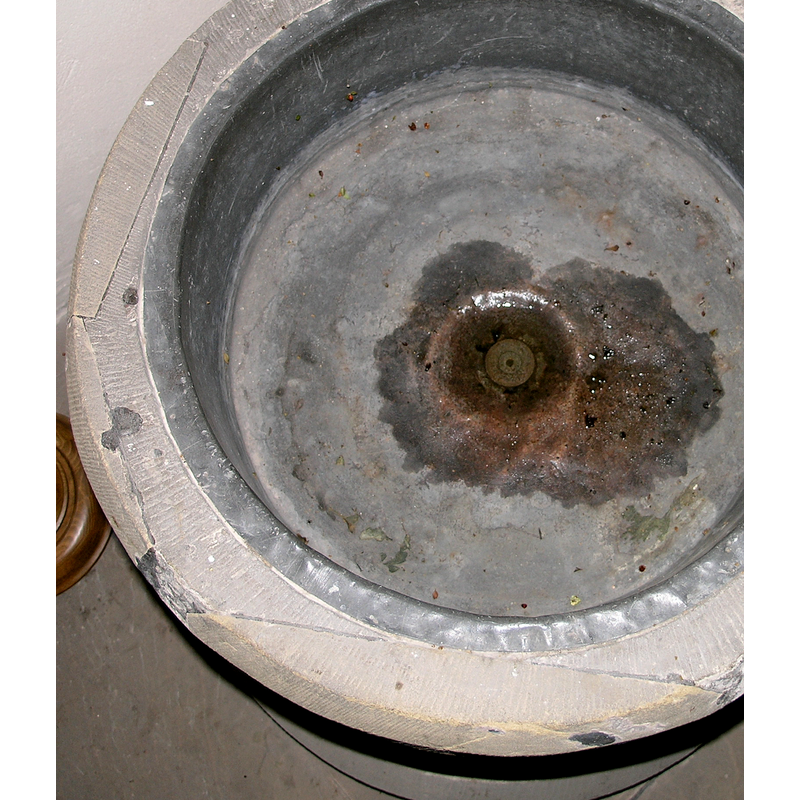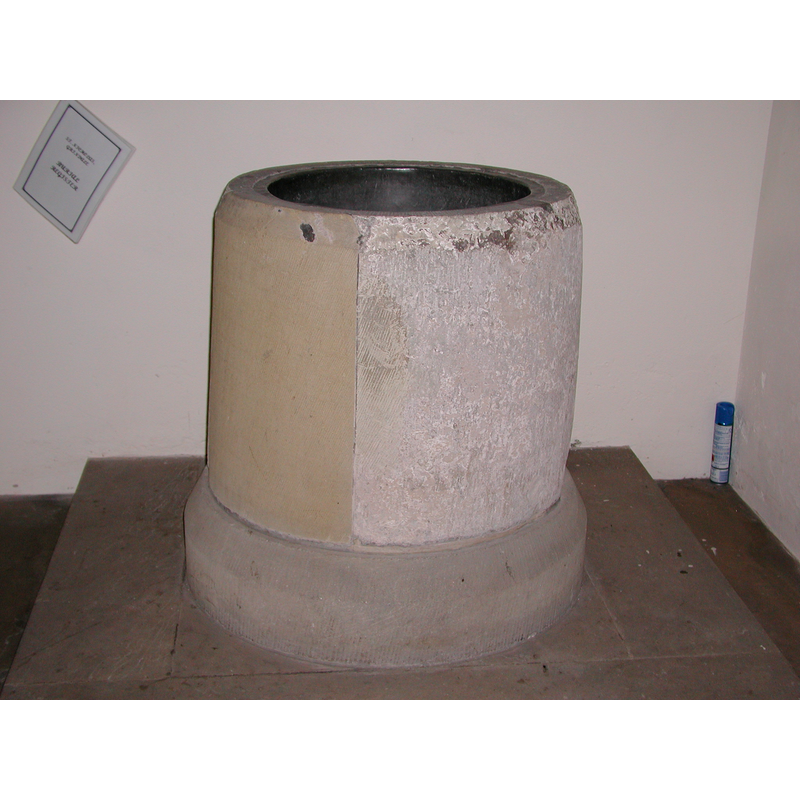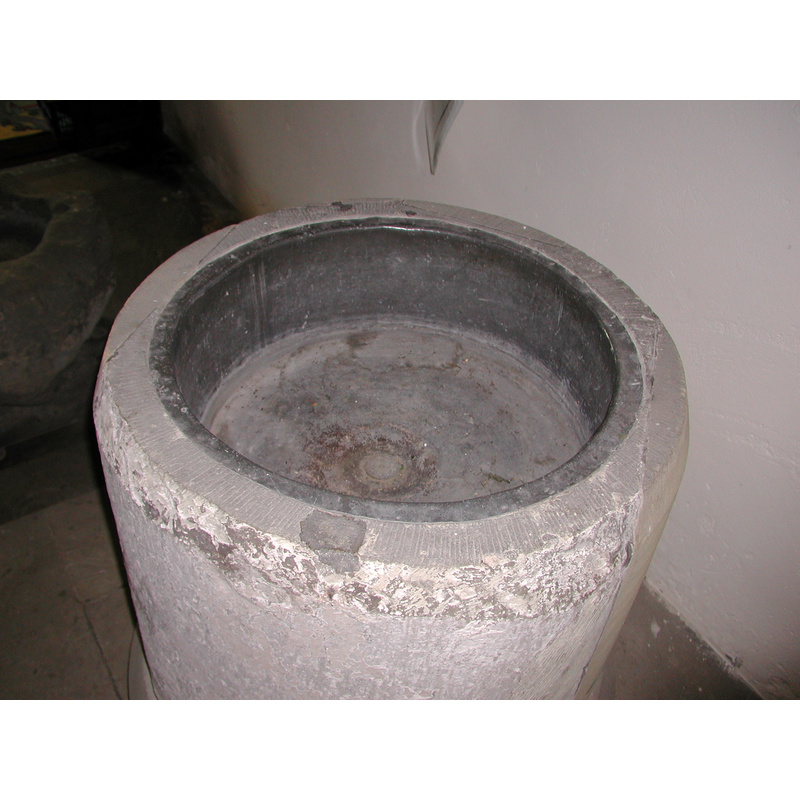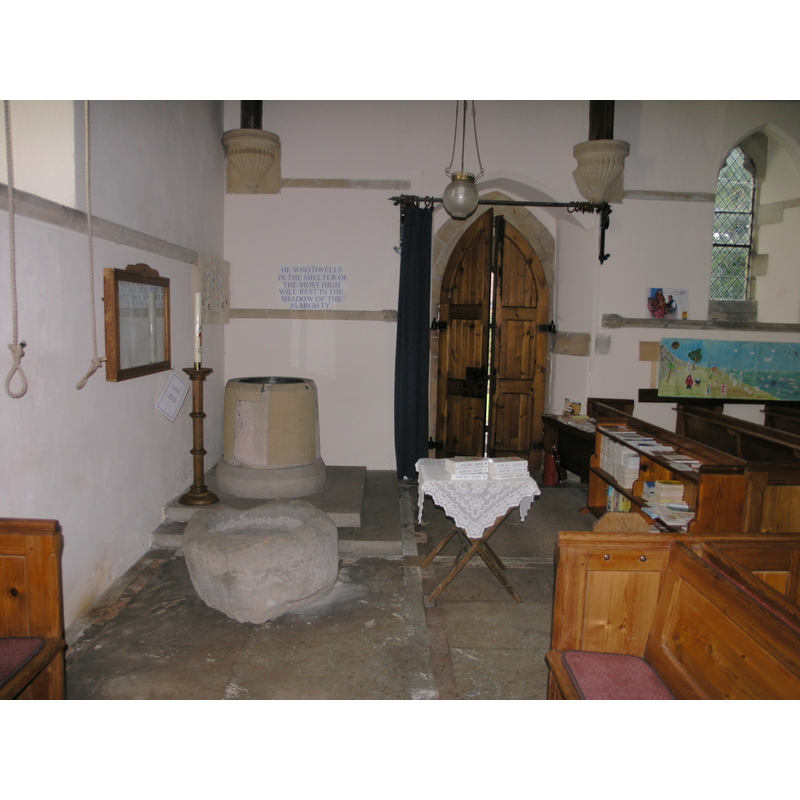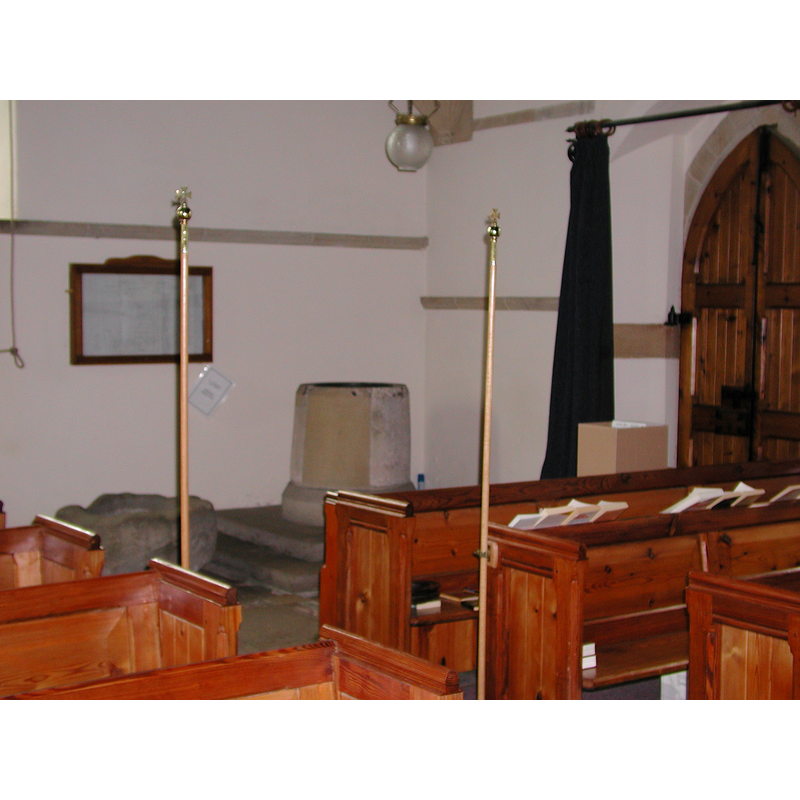Grindale No. 1 / Grendele / Grindall
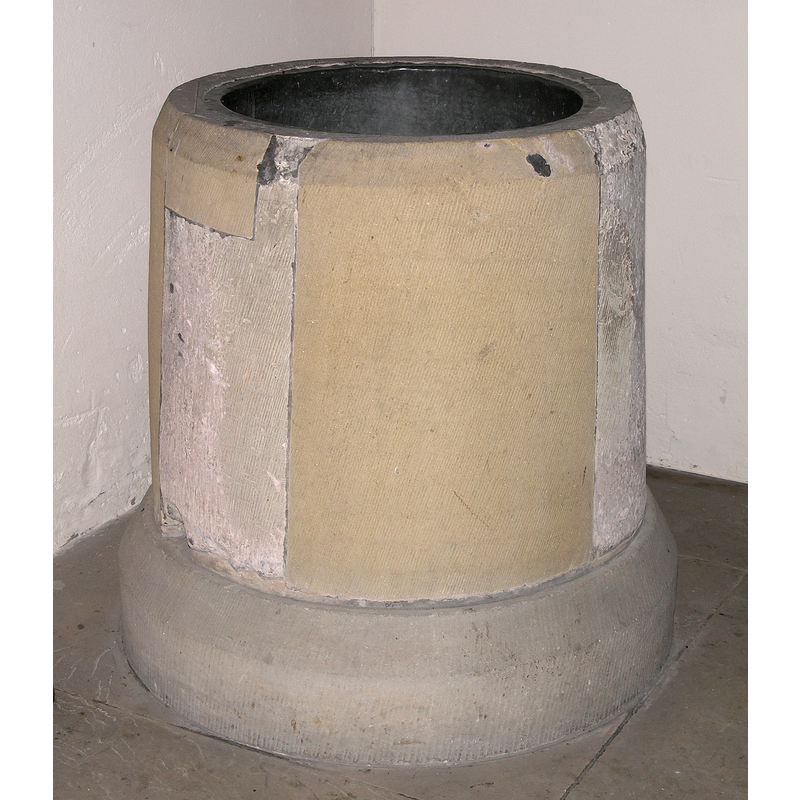
Image copyright © Colin Hinson, 2008
Standing permission
Results: 7 records
view of basin - interior
view of basin - upper view
view of font - east side
view of font - south side
view of font - upper view
view of font in context
INFORMATION
FontID: 01909GRI
Object Type: Baptismal Font1
Church/Chapel: Parish Church of St. Nicholas
Church Patron Saints: St. Nicholas of Myra
Church Location: Church Ln, Grindale, Bridlington YO16 4XS, United Kingdom -- Tel.: +44 1262 470873
Country Name: England
Location: East Riding of Yorkshire, Yorkshire and the Humber
Directions to Site: Located 6 km NW of Bridlington
Ecclesiastic Region: Diocese of York
Font Location in Church: Inside the church, in the NW corner of the nave
Century and Period: 12th century [restored], Norman [altered?]
Credit and Acknowledgements: We are grateful to Colin Hinson, of www.yorkshireCDbooks.com, for his photographs of this font.
Font Notes:
Click to view
There are two [group] entries for Grindale in the Domesday survey [https://opendomesday.org/place/TA1270/grindale/] [accessed 17 February 2025]; the one in the lordship of King William in 1086 reports a church in it. Listed in Cox & Harvey (1907) as a baptismal font of the Norman period. Tub-shaped -roughly cylindrical- baptismal font now greatly reconstructed; the basin is plain and almost perfectly cylindrical with a chamfered upper rim; the basin well is lead-lined, the lining modern, with a central drain; the circular lower base is modern, as is the two-step quadrangular plinth. [cf. Index entry for Grindale No. 2 for a fragment of a font found also in this church]. The entry for this church in the CRSBI [https://www.crsbi.ac.uk/view-item?i=6125] [accessed 17 February 2025] informs: "There are two fonts, one of which is said to have been brought from the lost village of Argam, about two miles away [...] Font 1. Probable 12th century font, massively and oddly restored with intricate patching of the sides, achieved without breaking into the basin. The rim has been roughly chamfered off, also tooled coarsely but regularly on the horizontal surface. The 1974 guide and its modern second edition suggests that ‘a rope design’ has been removed, but no evidence of this was observed. Judging by the shallowness of the rebate for the lead lining, quite a bit of stone must have been removed on top as well as by the rough chamfer, so perhaps there could have been a cable pattern – but without more evidence, that may be wishful thinking. Font 2. Rough bowl said to have come from Argam. The exterior of the bowl is highly weathered and battered, quite consistent with its having been inverted for a century or so in an open field. [...] The ‘restored 12th c. tub’ (Pevsner & Neave) is presumably one of the two fonts for this church. "
COORDINATES
Church Latitude & Longitude Decimal: 54.123734, -0.267855
Church Latitude & Longitude DMS: 54° 7′ 25.44″ N, 0° 16′ 4.28″ W
UTM: 30U 678538 6000739
MEDIUM AND MEASUREMENTS
Material: stone, type unknown
Font Shape: tub-shaped (round)
Basin Interior Shape: round
Basin Exterior Shape: round
Drainage Notes: lead lining
REFERENCES
Corpus of Romanesque Sculpture in Britain and Ireland, The Corpus of Romanesque Sculpture in Britain and Ireland, The Corpus of Romanesque Sculpture in Britain and Ireland. Accessed: 2025-02-17 00:00:00. URL: http://www.crsbi.ac.uk.
Cox, John Charles, English Church Furniture, New York: E.P. Dutton & Co., 1907

